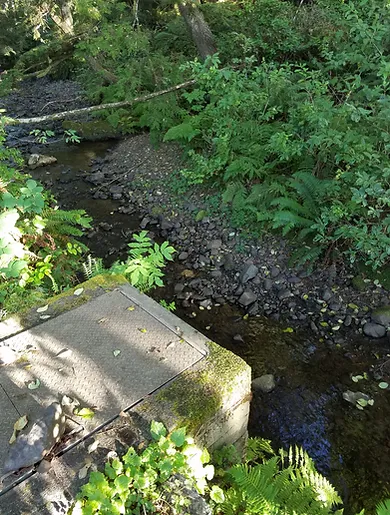Water Sourcing
The Source of Our Water
Arch Cape is a temperate rainforest with an average annual rainfall of 93 inches. It typicaly rains in 185 days of the year. In addition to water received by direct rainfall, the leaves and needles of the native Sitka Spruce, Hemlock, Alder and Western Cedar receive the condensation of water droplets from the dense fogs within the forests eventually adding their substantial volume to the streams draining to the west.
The Arch Cape watershed is bounded on the west by the Pacific and to the east by Onion and Angora Peaks rising to nearly 3,000 feet in two miles of the coast and is a unique ecological zone in the U.S.

Surface water eventually flows into both Shark Creek and Asbury Creek.
From October to June a portion of the water flowing in Shark Creek is directed to the water treatment plant at the impoundment dam.

The Asbury Creek pump station usually begins operation in mid-June of each year and ceases operation in mid-October when water intake is resumed at Shark Creek.

The water treatment plant shown above houses the membrane modules shown at right which provides filtering to the water before being directed to the holding tank.

Water held in the holding tank is then available on demand to Arch Cape customers.


When the water flowing in Shark Creek begins to diminish water is taken from the Asbury Creek intake at left and pumped to the water treatment plant for further processing at the pump station.

Water taken at Shark Creek and Asbury Creek, depending upon the time of year, is then brought to the water treatment plant at left where it is run through an ultrafiltration process with membranes shown below to remove particulate mater, bacteria and pathogens. A minimum level of chlorine is then added as required by law.
This water is then directed to the 525,000 gallon glass lined steel tank for gravity feed to customers through the five miles of pipes in the delivery system.


